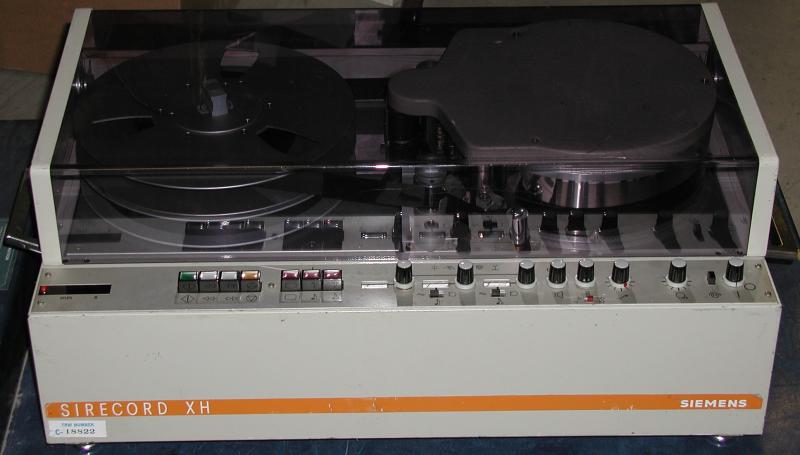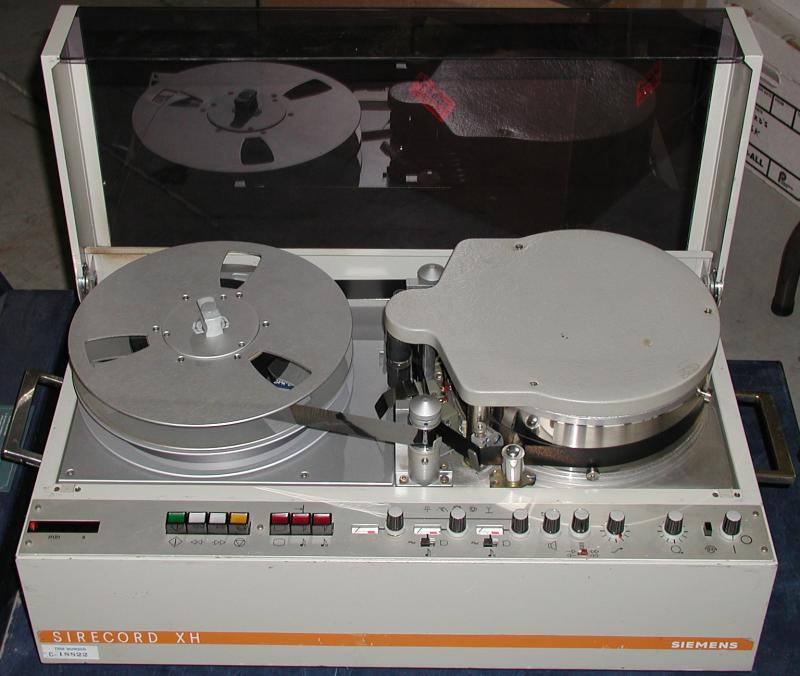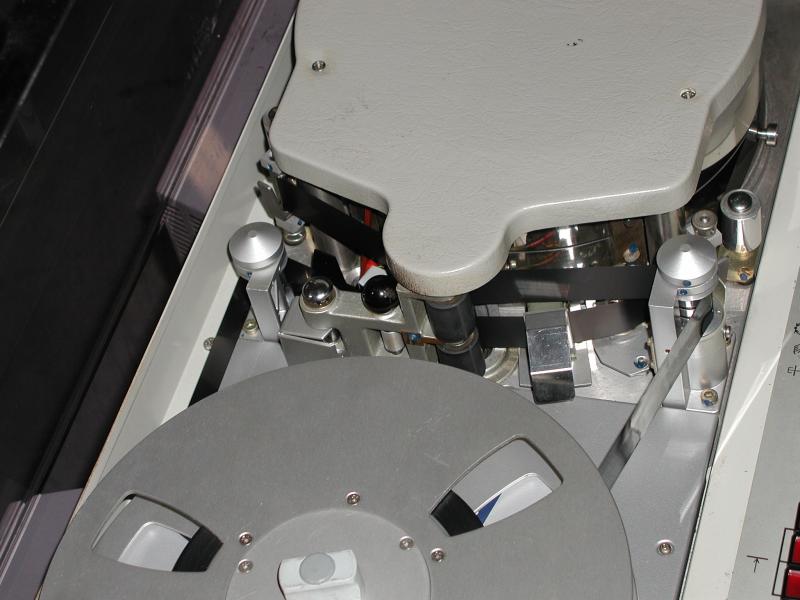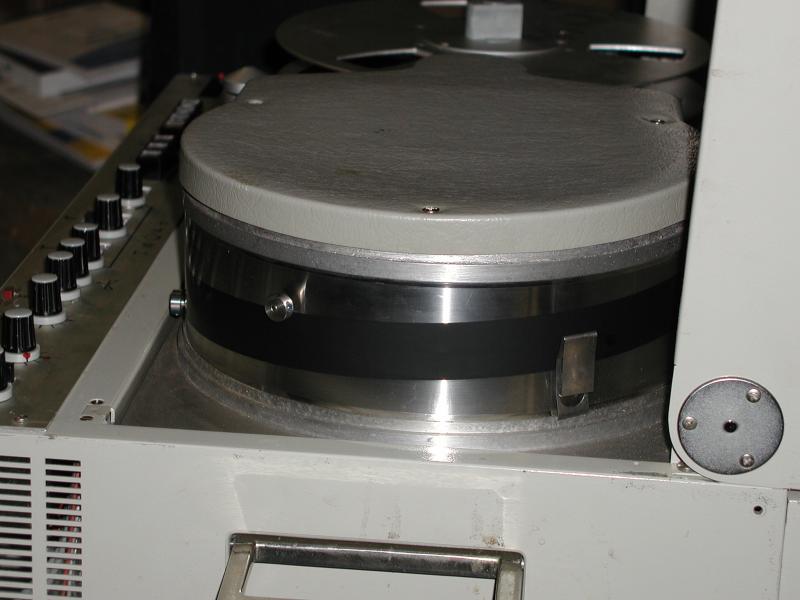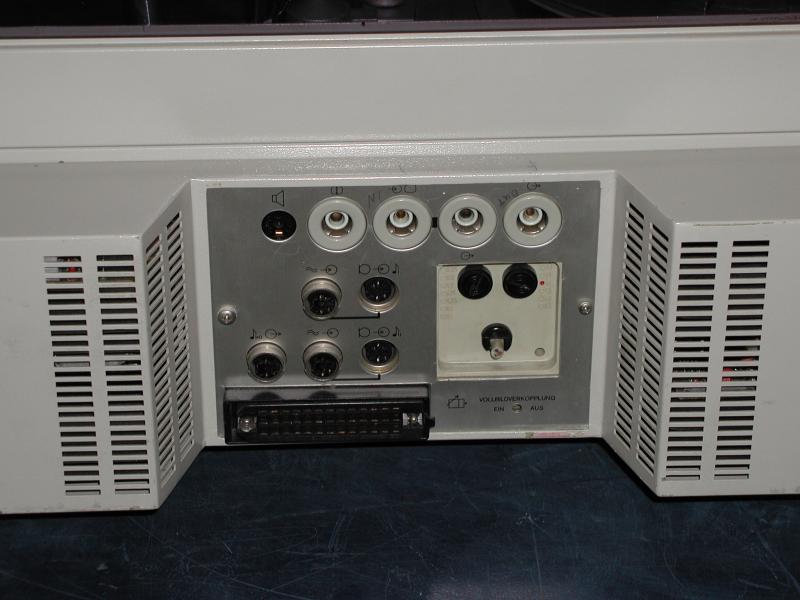Thanks go out to Michael (Duncan)
Geier for alerting me to this item. Mike spotted this VTR in a flea
market in Anaheim California on Sunday. Two emails and a phone call later,
the Siemens SIRECORD XH is delivered to LabGuy's World the very next Thursday!
It arrived in excellent condition, except for a chopped off power cord.
Which is no problem at all.
This is
a half helical VTR with stereo sound capability. Manufactured by Siemens
AG in Germany. Production year is not known. I am not sure what the intended
application for this machine was, but I was told that it was removed from
a medical system. The X in a VTR model number is usually included in the
model numbers of machines that have been specifically certified for medical
use. The tape reels are 10.5 inches in diameter and the tape width is one
inch. Tape speed and running time is unknown. The tape reels are stacked
one on top of the other to save space. This is called Coaxial Reels.
The bottom reel feeds tape and the top reel takes it up. The circumference
of the head drum is 30 inches and the diameter is 9.55 inches. Revolving
at 30 revolutions per second, the head to tape speed comes out to 900 inches
per second which is very respectable. The tape travels around the drum,
traveling upward in a helix, hence the term; Helical Scan. As the
tape travels around the drum, it is held in precise register by a series
of strategically placed guide pins. The capstan and pinch rollers are located
dead center between the head drum and the tape reels. The tape passes through
the capstan pinch roller twice on its way around the head drum. This arrangement
maintains a very even tension on the tape, essential to high quality tracking.
The overall size is 11 inches high, 26 inches wide and 16.5 inches deep.
Not very compact, in fact it's HUGE! and HEAVY! The entire deck weighs
120 pounds (54. 5 kilos). The |
VTR unit rests on a pair of
spring loaded runners to absorb (block?) vibration. The machine runs on
220 volts, 60 Hz. It consumes a whopping 200 watts! If I can borrow a step
up transformer, I will replace the power cord and see if it operates.
The connectors
are not standard BNC or UHF types that I am familiar with. Can anyone help
me identify, and possibly obtain, these video plugs? The audio DIN style
connectors are familiar and available. Also, all of the markings and labels
on the machine are pictorial icons. I suppose that is because this machine
was intended for international marketing. I'm sharp as a marble, and I
can't figure them out just by looking! I guess I will have to put power
to this VTR and apply the religious method of identifying the functions;
"Seek and ye shall find"! Hey! That's the way I type, too!
Update Info! 02.04.07:
Bruno Merlier
confirms that the video jacks are of a type he has seen on a Philips medical
video monitor he once had. Now, that I think of it, when I used to work
at Merlin Engineering, way back in 1985, my primary job was converting
Hitachi HR-200 one inch type C broadcast VTRs to a 1,000 scan line medical
format for ~ who else? ~ Philips Medical Systems! The video monitor I used
for final test had a round CRT and the deflection yoke could be rotated
so that the X-Ray image could be conveniently oriented for the surgeon.
The videotape that I was given for testing purposes was of a patient receiving
cardiac angioplasty.
NEEDED: Service and operator's manuals for this VTR. |
